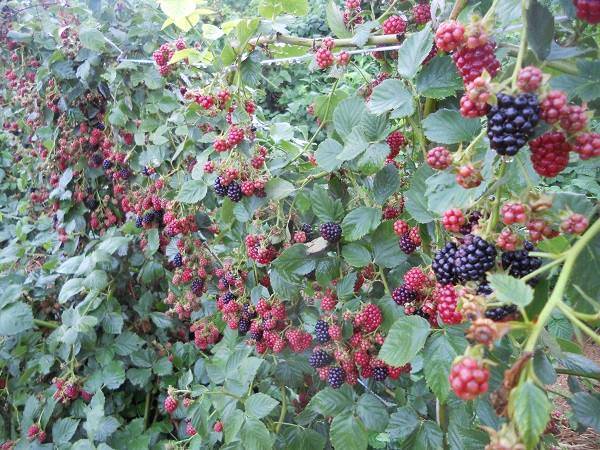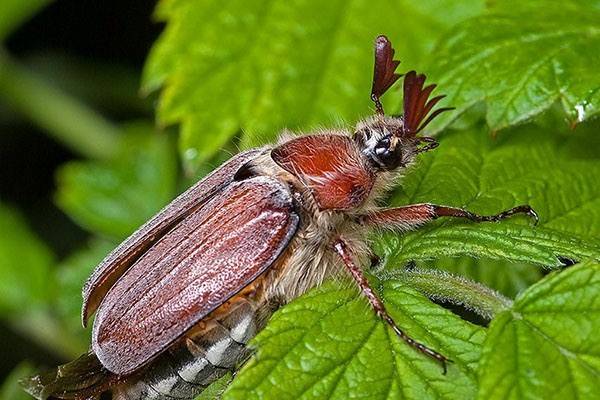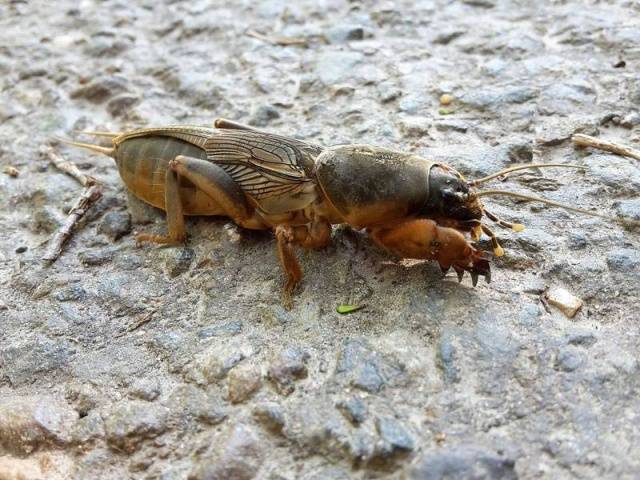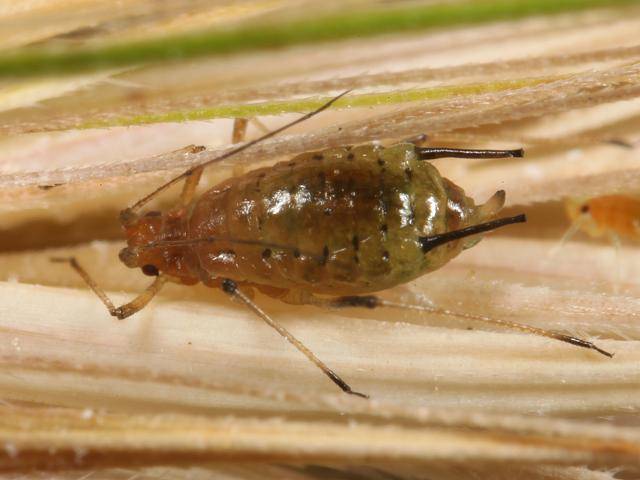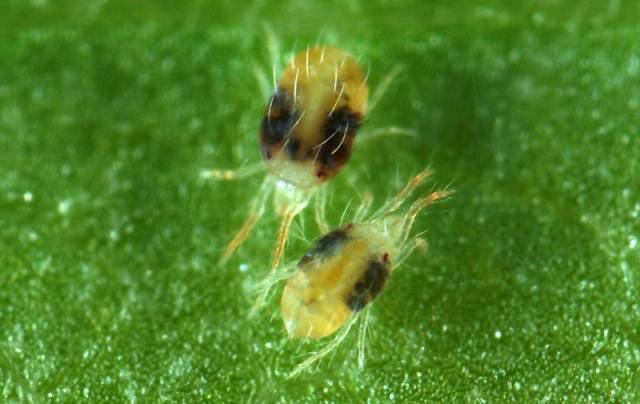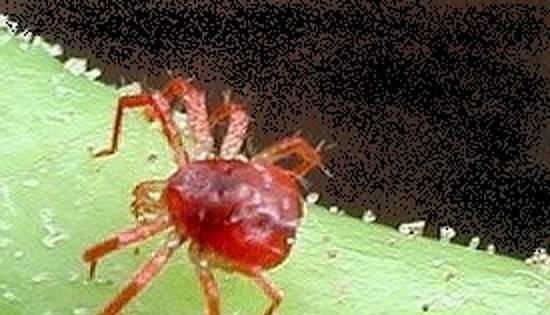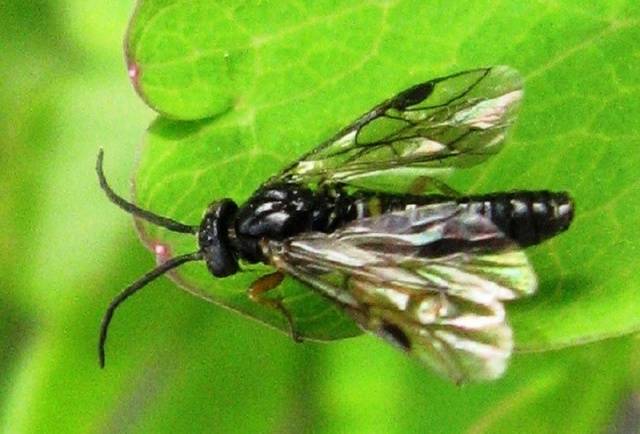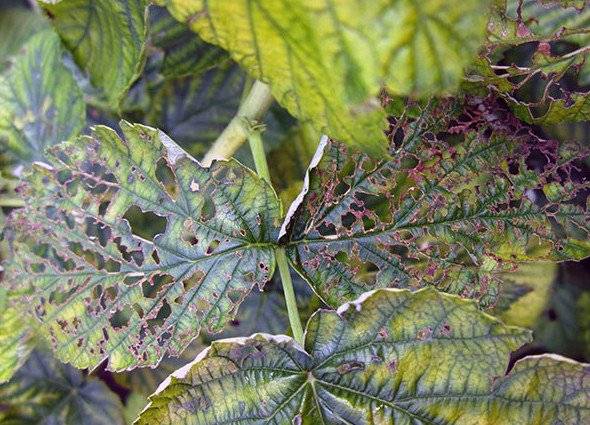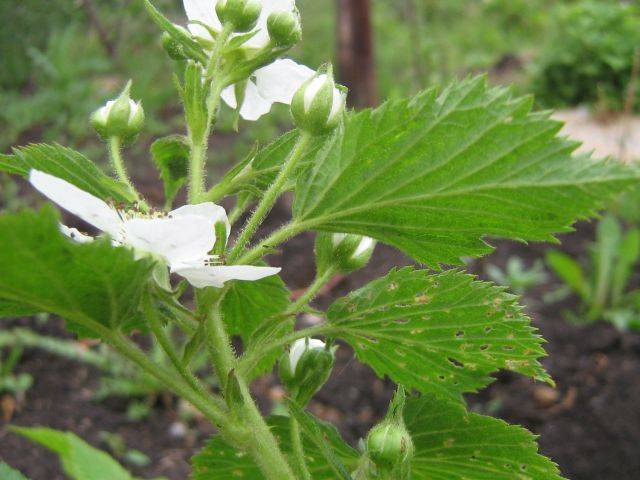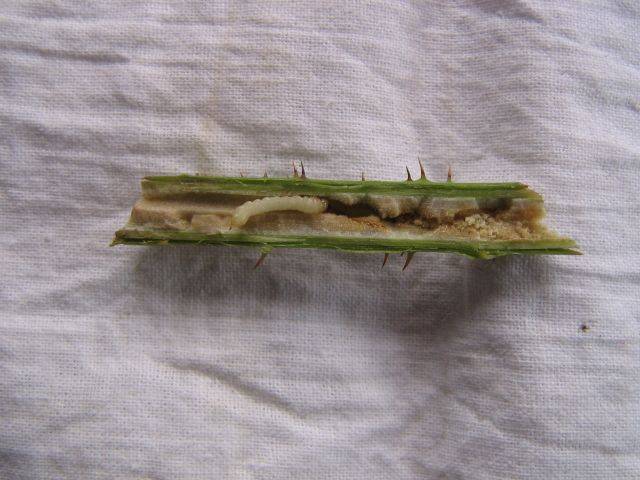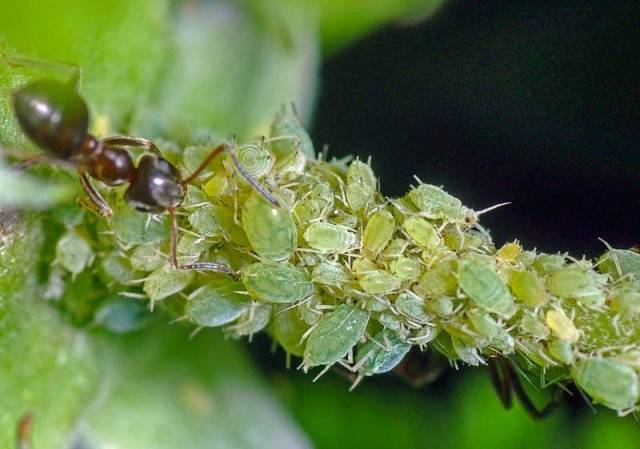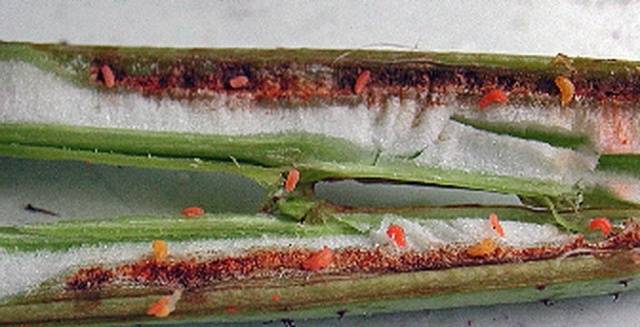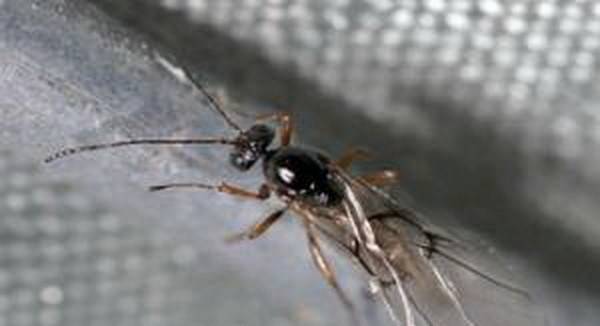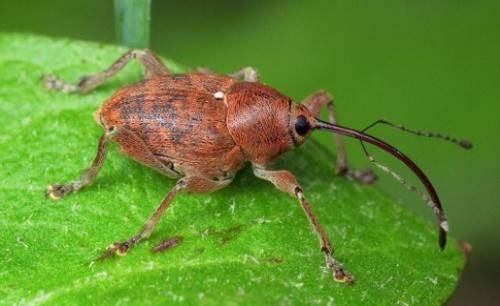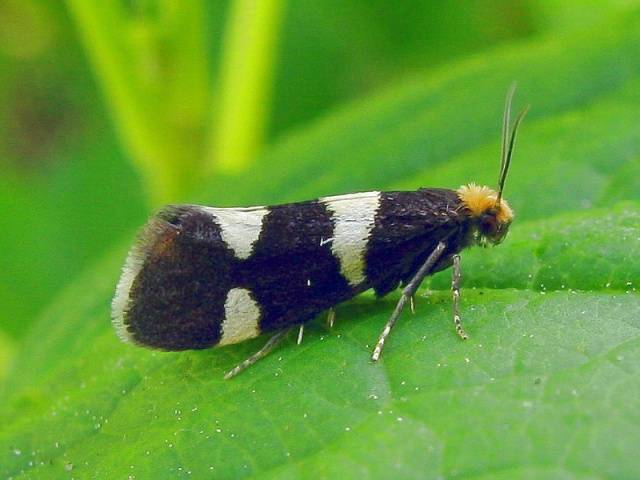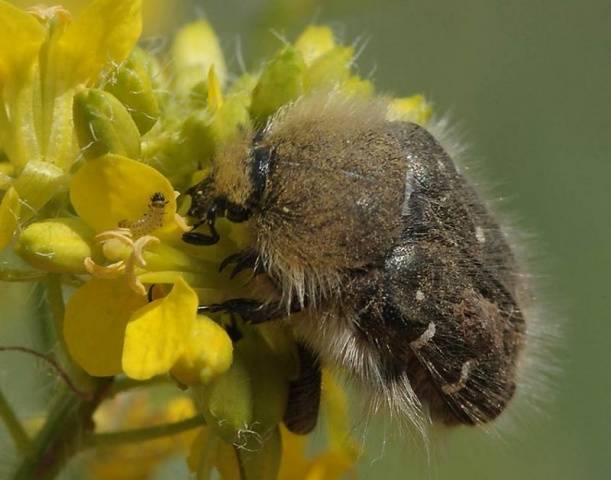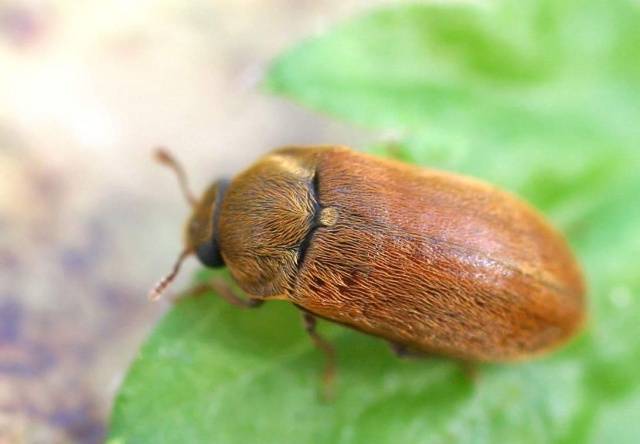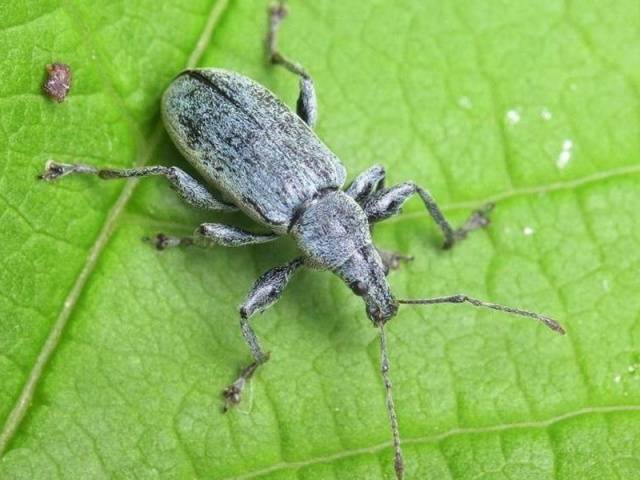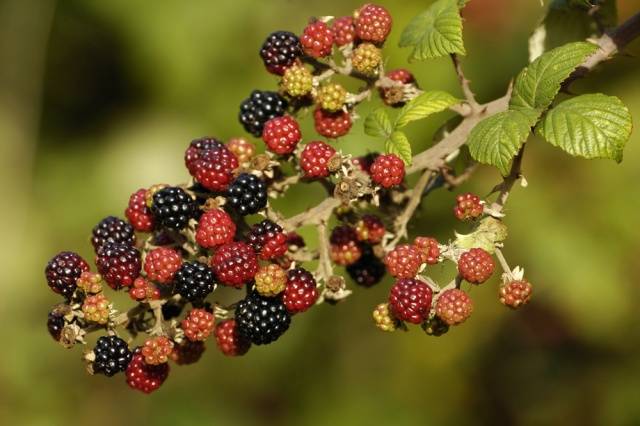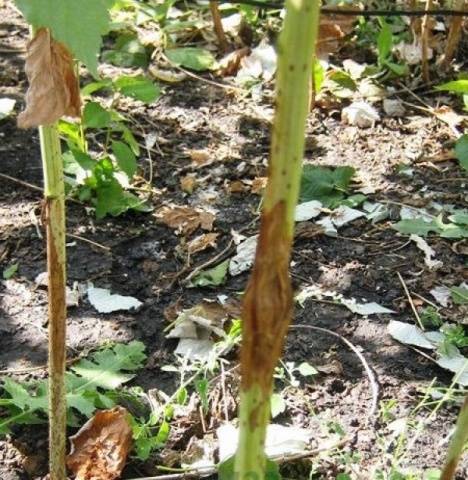Content
- 1 Classification of insects that harm shrubs
- 2 Root pests and how to deal with them
- 3 What insects harm blackberry leaves
- 4 Blackberry shoot pest control methods
- 5 Pests that harm the buds, flowers, buds and berries of blackberries
- 6 A set of measures to protect the blackberry from the invasion of pests
- 7 Conclusion
Every year blackberries are becoming more and more frequent guests in backyard gardens and orchards. Depending on the variety, different bushes may have a greater or lesser ability to withstand various pests and parasites. As a rule, those blackberry varieties, in the genotype of which there are no raspberry genes, are slightly damaged by pests and diseases - they have increased immunity. But on the other hand, raspberry-blackberry hybrids are able to pick up the whole range of diseases and parasites that are characteristic of raspberries. Details of blackberry diseases presented in another article, but here you can get to know more about those pests that can damage blackberries, and find out how you can defeat them.
Classification of insects harmful to shrubs
Among the endless variety of insect pests, it is customary to divide them into groups, according to which parts of the blackberry they damage the most. Of course, this classification is somewhat arbitrary, since some pests, such as the raspberry shoot aphid or the raspberry beetle, are capable of damaging all organs of the blackberry. Nevertheless, many pests most often specialize in some specific parts of the plant and, therefore, it is easier to identify and neutralize them.
- Pests that live mainly in the ground gnaw the roots and thereby cause wilting of blackberry bushes, and sometimes their complete death.
- Those pests that damage the leaves, worsen the general condition of plants, reduce their immunity and, accordingly, reduce the yield of blackberries.
- Among the pests living in the stems of blackberries, there are many tiny, almost invisible to the eye. But thanks to their activity, branches and stems begin to wither and suddenly break off. As a result, the crop may partially or completely die, and a blackberry plantation heavily infested with them will have to be completely renewed.
- Finally, various pests that eat blackberry flowers and berries spoil their presentation and taste, do not allow plants to develop fully and because of them, it is often necessary to destroy individual shoots or even whole bushes.
Root pests and how to deal with them
Insects-pests that live in the soil, and their larvae make numerous underground passages, gnawing all the roots of plants in their path. Especially tasty for them are young thin blackberry roots and bases of fresh young shoots that emerge from the soil in early spring.
May beetle (beetle larva)
May beetle by itself does not do anything good for fruit shrubs, in particular, for blackberries, since it can feed on its leaves, flowers and ovaries.But its larvae turn out to be much more harmful, because they eat up the most tender parts of the roots and young stems and, with a large number of them, can completely destroy the blackberry bushes.
The life span of the larvae is quite long, about 4 years, then they turn into a pupa, and after 1.5 months, adult beetles appear, and all this time they cause irreparable harm to the plantings of blackberries. Both adult beetles and their larvae of different ages hibernate in the soil. The emergence of adult insects to the surface begins approximately in late April - early May, during the flowering period of most fruit trees and shrubs. At the end of flowering, the female pest lay eggs in the ground at a depth of about 20-40 cm, from which larvae soon appear.
Based on knowledge about the life cycle of the May beetle, the following protective measures can be taken:
- Before laying a new blackberry plantation, for prevention, soak the root system of the bushes in 0.65% Aktara solution for half an hour. Aktara is a systemic insecticide and all parts of the blackberry eaten by the beetle will be poisonous to the pest for 30 days (when the plants are sprayed with the drug) and up to 2 months (when soil is spilled).
- For prevention purposes, it is advisable to sow siderates a year before planting in the areas where you are going to plant blackberries: rapeseed, clover, mustard or alfalfa. Isolation of mustard can scare away beetles for a long time, so it is beneficial to plant it also in the aisles of blackberries.
- It is convenient to collect adult beetles by hand in the morning hours, when they are in some numbness. To do this, spread a film under the bushes and trees and shake off the pests on it, after which they are collected and destroyed in a lime solution.
- If you have a small number of blackberry bushes, then it is best to carefully dig each bush in cloudy weather and shake it off on film together with the ground, manually selecting all the larvae. Before planting in its original place, the blackberry roots are additionally treated with a clay mash with the addition of 100 g of tobacco dust to a bucket of liquid.
- From folk remedies, the use of an iodine solution (25 drops per 8-10 liters of water), which is watered with blackberry bushes in April-May at the root, is effective against the May beetle.
- Of the chemical preparations, Confidor and Antichrushch can be used in early spring, with solutions of which they shed the earth around the blackberries and process the plants themselves.
- Keep in mind that adult beetles like to treat themselves to birds: starlings, rooks, as well as bats. And the larvae of the pest are tasty prey for shrews, moles and even foxes.
Medvedka
It is a large insect, up to 5-6 cm long and up to 1.5 cm wide with four wings, powerful jaws, digging holes and passages for itself with its front legs. It feeds mainly on young roots and shoots, but on the way it is able to gnaw through any powerful blackberry roots, thereby dooming the bush to death. The larvae laid by females during the summer turn into adult insects only the next year.
If you notice wilted shoots and even whole blackberry bushes, it is recommended to carefully examine the soil under the plants in search of holes, up to 3 cm in diameter, which may be the entrance to the underground dwelling of the bear. If a pest is found, you can first thoroughly loosen the soil around the blackberry bushes, and then try to apply one of the well-proven folk methods of struggle:
- Pour a bucket of water with a handful of detergent dissolved in it into the hole. This will force the bear to come to the surface, after which it must be destroyed. The caught bear is eaten with pleasure by chickens, ducks and other poultry.
- When planting blackberries, pour eggshells, dried marigolds, chrysanthemums into the holes.
- Spread sand moistened with kerosene around the bushes.
- Pour blackberry bushes under the root with a solution of ammonia in the proportion of 3 tablespoons per bucket of water.
- Install a windmill on a metal wire that creates vibration in the soil and repels pests.
- Traps are set in the form of jars, with edges coated with honey, dug into the ground.
- In the fall, small holes are dug and filled with a mixture of straw and manure. Medvedka settles in them for the winter, and after the onset of frost, straw with manure is pulled out and distributed over the surface - the pests die.
- In early spring, poisoned baits made of bread and match heads are placed in minks.
If you want to quickly get rid of the pest, then you can use special chemicals - Medvetox, Medvecid and Boverin, which are mixed with the soil near the blackberry bushes.
What insects harm blackberry leaves
Blackberry leaves are very attractive not only for various types of aphids, ticks, but also for caterpillars and flea beetles.
Raspberry leaf aphid
Aphids are an unpleasant pest species that attacks primarily blackberries with raspberry genes (Tayberry, Texas, Thornless Loganberry varieties). These insects are very small, no more than 3 mm in length. Those that live on blackberries are characterized by a light yellow color.
Eggs overwinter at the ends of the shoots, near the buds and with the onset of spring, from them wingless insects begin to appear first, which live in small groups or singly on the underside of the leaves. At the beginning of the leaf aphid activity, the blackberry leaves only slightly bend and no noticeable damage occurs. But over the summer period, mass reproduction of pests occurs, several generations of aphids are replaced, as a result of which a massive leaf fall may even occur in the midst of summer. Blackberry yields are reduced, and the frost resistance of the shoots is reduced to zero. But the main danger of aphids is that they carry practically incurable viral diseases.
True, it is quite easy to choose how to spray blackberries from pests that can destroy all plantings. In early spring, relatively harmless biological agents can be used for treatment against raspberry leaf aphids: Agravertin, Aktofit, Fitoverm. Spraying is repeated 2-3 times in 5-7 days.
Powerful systemic insecticides such as Confidor and Mospilan do an excellent job with aphids. Spraying with these products must be carried out before the flowering of the blackberry.
If you notice the pest too late, after budding and in the summer, spraying with tobacco infusion can help: insist 200 g of tobacco dust in 10 liters of water for 2 days. The infusion can be used within 24 hours. After 8-10 days, the processing of blackberries is repeated.
Blackberry aphid
This is just one of the varieties of the numerous aphid family, distinguished by its relatively larger size and yellowish-greenish color with dark ornaments on the body. Otherwise, the lifestyle and the degree of harmfulness are very similar to the raspberry leaf aphid, therefore, the methods of pest control are the same.
Common spider mite
Ticks are small spiders and cannot be distinguished with the naked eye. Their presence betrays the appearance of whitish and speckled spots on blackberry leaves. They live on the underside of leaves and sometimes give themselves away by forming a small cobweb between leaves and stems. Most of all, they are harmful to young seedlings and blackberry shoots. Leaves quickly turn yellow, dry up and fall off. Adult bushes suffer from ticks much less often. The pest reproduces especially intensively in hot and dry conditions, therefore it is most often found in greenhouses and in the southern regions.
Affected blackberry plants stop growing, reduce yields, and young seedlings may even die.
The treatment of blackberry seedlings with Fitoverm or Akarin will help to save the situation; from the folk methods of fighting against ticks, an infusion of onion or garlic husks (400-500 g per 10 liters of water) is used.In severe cases, spraying blackberries with Neoron or Aktellik is used, but only after harvesting the berries.
Raspberry mite
Microscopic in size arachnids of a reddish hue emerge from under the scales of the buds in spring, where they hibernate, and settle on the bottom of blackberry leaves. As a result of their activity, the leaves are bent, become corrugated, discolored. The spots are somewhat reminiscent of a viral mosaic, so damage from a pest is often confused with this disease.
In the warm season, to combat raspberry mites, 1% sulfur solution is used to spray blackberries, as well as Akarin and Fitoverm.
Raspberry hairy mite
The pest has a worm-like whitish hue and two pairs of legs. Otherwise, it is very similar to a raspberry mite, so the methods of dealing with it are exactly the same.
Raspberry leaf sawfly
In this pest, which looks like a fly, the larvae, similar to caterpillars, bring the greatest harm to the blackberry, which is why they are often called false caterpillars. If left unchecked, they can kill more than half of the leaves on blackberry bushes.
The larvae overwinter on the soil surface among fallen leaves in spider cocoons. They pupate in early spring, and in the second half of May already adult sawflies fly out, which begin to lay light-colored eggs on the underside of blackberry leaves near the veins or along the edges. The larvae appear literally in 6-8 days and begin to intensively eat away the blackberry leaves, starting from the lower tier. Pests prefer mature leaves, do not feed on young ones, therefore, by the end of summer, they gradually move closer to the top of the blackberry bushes, leaving behind perforated or completely gnawed leaves.
As a result, already in the current season, the yield of blackberries is declining, and the plants do not have time to form full-fledged buds for the next year's harvest.
As a measure to combat the sawfly, it is necessary to loosen the ground under the blackberry bushes and mulch it with a layer of 6 cm or more. From a small number of bushes, false caterpillars are harvested by hand. They also use spraying blackberries with infusion of tobacco, garlic, wormwood or a solution of carbolic soap (100 g per 15 l of water).
Cruciferous flea
Often in hot and dry weather, a common cruciferous flea attacks the blackberry leaves and perforates them. In general, the damage from the activity of this pest is insignificant. As a protective measure, the leaves are powdered with a mixture of wood ash and tobacco dust.
Various caterpillars
Caterpillars of many butterflies can also gnaw on blackberry leaves, leaving only skeletons of them. Blackberries are especially fond of caterpillars of the moth butterfly and raspberry glass. With a small lesion, it is most convenient to collect pests by hand and feed them to poultry. If you missed the moment, then you can use spraying with a biological product Lepidocide. Chemical preparations against leaf-gnawing pests (Karate, Fufanon, Tiovit-Jet) can be used strictly at the very beginning of blackberry budding, no later than 5 days before flowering.
Blackberry shoot pest control methods
Shoot pests on blackberries can be detected with careful and regular inspection of the bushes. The usual control measure is cutting and burning the affected shoots, but sometimes chemical remedies have to be used.
Raspberry stem fly
If you find withered tops of young shoots on a blackberry, then a raspberry stem fly has most likely worked here. This is a very small gray fly no more than 5 mm long. Forms only one generation per year. The eggs are white, the larvae are light. Lays eggs at the base of the leaves on the tops of the shoots. The appeared larvae penetrate into the shoot and make a circular passage in it - the upper part of the shoot withers.
And the larvae gradually descend along the stem to the base, trying to get into the soil for pupation and wintering.On a blackberry, lateral shoots and their small branches are most often damaged, so the damage is small. Nevertheless, the affected shoots must be removed and burned, and the soil around the raspberries must be mulched so that the pest cannot fly out and lay eggs in late spring.
Raspberry shoot aphid
The raspberry shoot aphid is very similar to its cousin, the leaf aphid, which was described above. It only settles in large colonies, clinging to young buds from the beginning of spring and sucking juices from them. Then the pest occupies the shoots, leaf stalks and, finally, gets to the buds and inflorescences. In the summer period, the pest has the possibility of live birth - that is, the females give birth to larvae immediately, bypassing the egg stage. This allows you to speed up the process of reproduction of insects several times.
In order not to miss the moment of intensive reproduction of the shoot aphid, it is necessary to inspect the tops of young blackberry shoots regularly. At the first sign of the presence of pests, the shoots are cut and burned. And the remaining stems are sprayed with Fitoverm or Aktofit.
Crimson stem gall midge
Blackberries are harmed by the larvae of this small flying insect, orange-yellow in color. The pest is easy to identify by the presence of thickenings on the shoots, in the form of growths - galls. It is in them that the larvae of the stem gall midge live and feed. They also spend the winter there. Pupae appear in the spring, and when the weather is warm (+ 10 ° + 13 ° C), adult gall midges appear from them. The shoot usually breaks in places where the larvae are concentrated and the total number of damaged shoots can reach 40-50%.
Pest control consists of cutting and burning all growths in the fall or early spring.
Raspberry shoot gall midge (raspberry gnat)
An even more dangerous representative of gall midges, since no pronounced gall outgrowths are formed in the places of its penetration, but they can be identified by how brown spots are first formed on the shoot, and then this place turns black. Orange-red larvae, in contrast to the stem gall midge, overwinter in the upper soil layer (2-4 cm) at the base of the blackberry stems.
Therefore, among the control measures, it is also important to loosen the soil between the blackberry bushes in the fall, and mulch in the spring to prevent the emergence of adult insects.
Sometimes, with severe damage, treatment is used in early spring before flowering with chemical systemic preparations, such as Confidor or Aktara.
Raspberry walnut
Another pest of blackberries, in the places of life of the larvae of which swellings are formed on the shoots - galls. Gauls are elongated. Blackberry branches, on which galls are formed, are doomed to perish, so there is no need to expect a large harvest from damaged bushes.
In galls, the larvae overwinter. Therefore, in order to destroy the pest, it is only necessary in the fall to find, cut and burn all the blackberry shoots with galls.
Pests that harm the buds, flowers, buds and berries of blackberries
These pests not only spoil the appearance of the berries, but also worsen their taste and yield characteristics.
Raspberry weevil (flower beetle)
The pest is a small gray-black beetle up to 3 mm long with a proboscis. In spring, females damage blackberry buds by laying eggs in them. And in July, young beetles that emerged from the larvae actively feed on blackberry leaves before leaving for wintering in the soil.
The best way to cope with a weevil is spraying blackberry bushes during the budding period with mustard powder infusion with an interval of 5-7 days. To do this, dissolve 100 g of mustard in a bucket of warm water and leave for 12 hours. Loosening the soil around the bushes in the fall and early spring also helps to reduce the number of pests.
Raspberry kidney moth
The pest is small in size, the caterpillars of which eat young blackberry buds, adult butterflies feed on buds and nectaries in flowers, and the larvae hatch in fruits and eat the drupes, which is why they stop developing.
The activity of the pest at least leads to a decrease in yield, but it can also lead to the death of blackberry bushes. From folk remedies to combat it, an effective tincture of wormwood (2 kg of fresh grass per 10 liters of water), which is treated with blackberry bushes 3-4 times with an interval of 8-10 days during budding and flowering.
Among other methods of struggle - they cut out and burn all old shoots and leaves, loosen and mulch the ground.
Shaggy bronze
The beetle is small in size, black in color with white spots and yellow-gray hairs. The pest is most active in warm sunny weather from 10 am to 4 pm. It eats out pistils from blackberry flowers, but the damage from it is negligible. The best way to protect yourself is to collect it by hand.
In regions where the number of bronzes is greatly increased, you can use the insecticide Calypso.
Raspberry beetle
This pest is more typical for raspberries, rarely found on blackberries. It is capable of damaging both leaves and stems of blackberries, but it lays eggs in inflorescences and in fresh ovaries. It looks like a flying beetle, no more than 4 mm in size, grayish-brown color with rusty hairs.
To combat it, in the fall and spring, they dig up the ground near the bushes, and then dust it with a mixture of tobacco dust and wood ash.
In early spring, it is effective to shed the ground with Confidor's solution, and when the blackberry buds first appear, spray it with it a second time.
Blackberry mite
The pest is arachnid and can be spread by wind and in infected planting material. Blackberry mites are very small, hibernate inside blackberry buds and, with the onset of warm weather, begin to intensively feed on its inflorescences and berries. They introduce special substances inside that change the composition of the berries, due to which their taste deteriorates, the berries cannot darken when ripe.
To counteract pests, it is necessary to spray the blackberry bushes before budding with the biological product Akarin or Apollo. It is advisable to repeat the treatment after 8-10 days.
A set of measures to protect the blackberry from the invasion of pests
Often gardeners, having discovered unknown larvae, caterpillars or damaged leaves and fruits, do not know what to grab for, where to run, how to treat blackberries from pests that can destroy the fruits of their labors.
It is necessary to understand that the protection of the garden begins with the establishment of its uninfected planting material. Therefore, the day before planting, it is advisable to soak the root system of all seedlings in Aktara's solution or tobacco dust infusion for several hours.
It is advisable to plant blackberries in areas where siderates (mustard, clover) were planted a year before to improve the soil and reduce the number of its harmful inhabitants.
Since most pests hibernate either in the soil or on plants, spraying blackberry bushes with hot water (60 ° -70 ° C) in the early spring period, when the buds have not yet woken up, is very effective. If the plants are then covered with plastic wrap for a couple of hours, then this prophylactic technique can be very effective. It should only be understood that the conditions are different everywhere and not for all varieties of blackberries the method will be harmless, therefore, for the first time, it is worth conducting a test on several shoots in different parts of the blackberry.
During the entire warm season, it is necessary to remove drying and damaged leaves and blackberry shoots, destroying them, constantly loosen and mulch the soil. You should also not thicken the planting of blackberries and do not forget to regularly feed and water them.
Immediately after the end of fruiting, it is necessary to completely cut out the old shoots and burn them.
Conclusion
Blackberries, especially their varieties, which lack raspberry genes, still remain relatively resistant to the invasion of various pests. Nevertheless, gardeners cannot relax. You need to know enemies by sight and apply preventive methods of protection, and if pests are detected, act as quickly as possible, using, first of all, harmless folk remedies.
